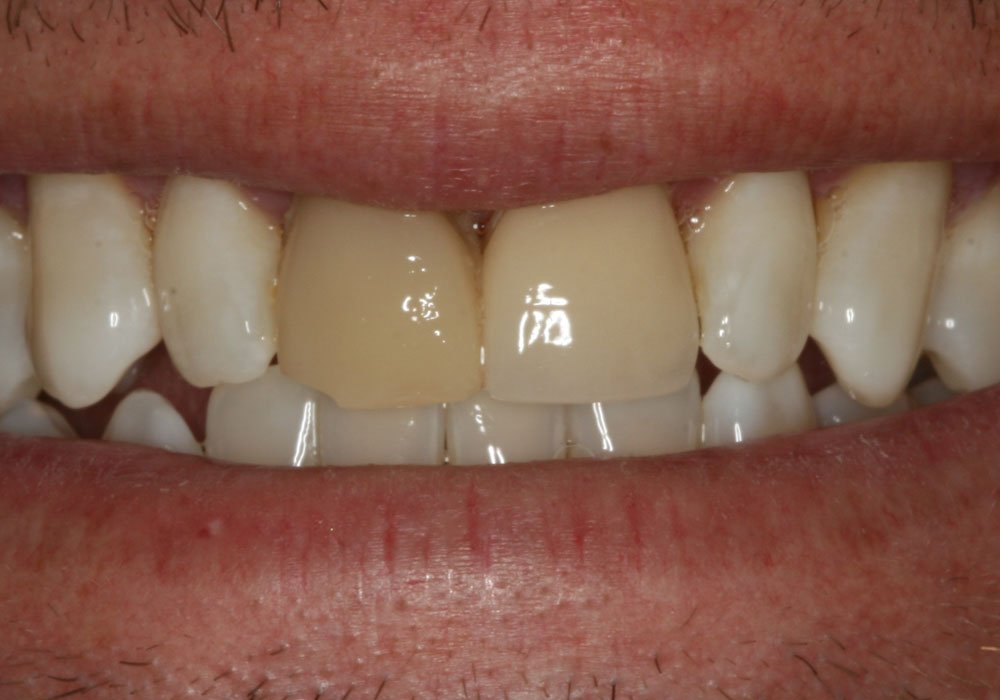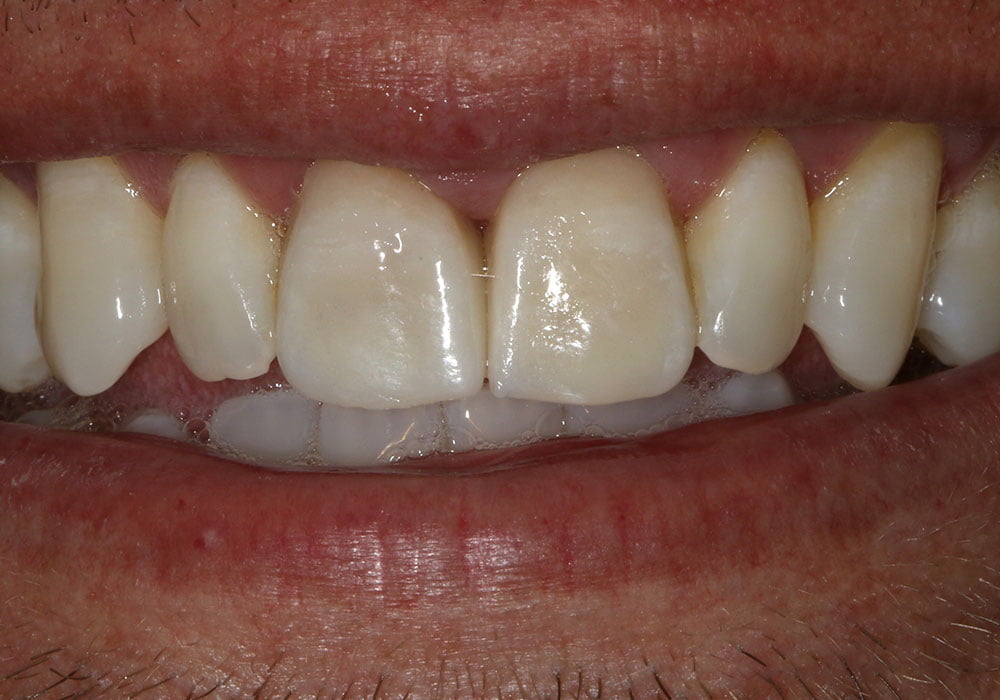Why do I need a dental crown?
Crowns are commonly used to repair damage that has affected the structure and functionality of a tooth. As they replace the whole outside structure of the tooth, they are a full rebuild for teeth that need an overall restoration. For teeth that have had multiple fillings, extensive decay, and general damage, a crown is the way forward. They are matched in size, shape, and colour to sit comfortably alongside your existing teeth.
When a tooth becomes so weak that the cusps (pointed parts on your back teeth) may fracture, a dental crown is recommended. This helps to give strength to prevent the tooth from breaking by encapsulating and protecting the entire tooth. In some cases, we may also use a crown to restore a tooth following a root canal treatment for an aesthetic and reliable finish.
Book a crown consultationWhat are crowns made from?
There are two main types of tooth-coloured dental crowns; the metal-ceramic crown and the all-ceramic crown. The difference is in the sub-structure. One has a metal sub-structure and the other a pressed ceramic or zirconia sub-structure. If you are looking for aesthetics, strength and longevity, the all-ceramic crown is for you. Although the metal-ceramic crowns are strong, they can often leave a dark line around the gum margin and this can look aesthetically displeasing.
Porcelain crowns can be used to lighten teeth, narrow the gap or fix teeth that stick out. The advantage of using pure porcelain is that the crowns can be made near-identical in colour to your existing natural teeth.
What is involved in the treatment?
We first ensure that the internal structure of the tooth is intact and that there are no signs of infection present. We prepare your tooth by removing a layer of tooth structure, making sure we leave a strong core.
We take impressions of your teeth and record their colour so your crown can be made to fit perfectly. Between appointments, we protect the prepared tooth with a temporary crown.
When your crown is ready, the temporary crown is removed and the new permanent one is fixed in place with a strong dental cement.







